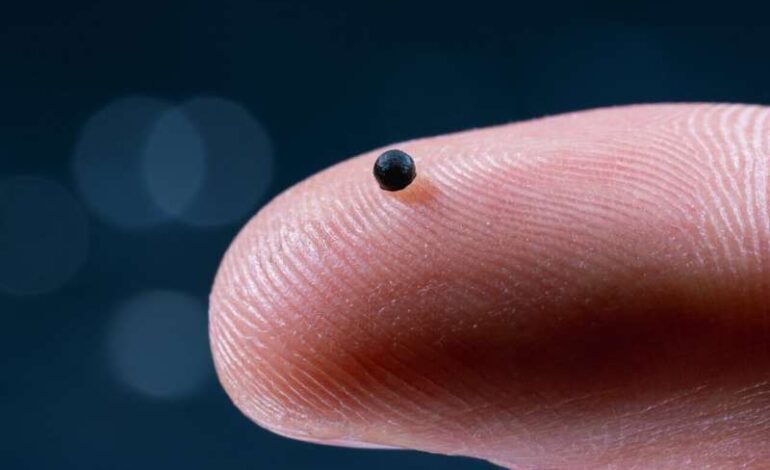Innovative Magnetic Microrobots Set for Clinical Trials in 2025

Research at ETH Zurich has reached a significant milestone with the development of magnetic nanoparticles capable of navigating complex blood vessels. These innovative microrobots are poised to enter clinical trials in 2025 and offer a targeted approach to delivering medications directly to sites of thrombosis, which affects approximately 12 million individuals globally each year.
Current treatment methods for strokes often involve administering drugs to dissolve blood clots, but these medications circulate throughout the body, increasing the risk of serious side effects, including internal bleeding. The new microrobots aim to revolutionize this approach by delivering therapeutic agents directly to the thrombus, minimizing systemic exposure and enhancing treatment efficacy.
The microrobot’s design features a proprietary spherical capsule made from a soluble gel shell, which can be controlled with magnets. This capsule contains iron oxide nanoparticles, which provide the necessary magnetic properties for navigation. Fabian C. Landers, the lead author and a postdoctoral researcher at ETH Zurich’s Multi-Scale Robotics Lab, emphasized the challenge of balancing the size of the capsule with its magnetic effectiveness, particularly in the small vessels of the human brain.
Precision Engineering for Targeted Therapy
To visualize the microrobots during procedures, the researchers incorporated tantalum nanoparticles as a contrast agent, allowing for X-ray tracking. Bradley Nelson, a professor at ETH, highlighted the complexity of integrating magnetic functionality with imaging and control, a feat achieved through extensive collaboration between materials science and robotics engineering.
The microrobots are equipped to deliver various drugs, including thrombolytics, antibiotics, and anti-tumor medications. The release mechanism is activated by a high-frequency magnetic field, which heats the iron oxide nanoparticles, dissolving the gel shell and releasing the drug precisely where needed.
The administration process involves injecting the microrobot via a catheter, followed by an electromagnetic navigation system to guide the device to its target. This catheter design is based on a commercially available model, featuring an internal guidewire and a polymer gripper that releases the microrobot when pushed beyond the external guide.
Successful Navigation in Complex Environments
Navigating the human arterial system poses significant challenges due to varying blood flow speeds. To address this, the researchers developed a modular electromagnetic navigation system for use in operating theatres. They combined three distinct magnetic navigation strategies that enable the microrobot to maneuver effectively through the arteries.
The microrobot can roll along the vessel walls using a rotating magnetic field, achieving movement speeds of up to 4 millimeters per second. Additionally, the device can move against blood flow, even at velocities exceeding 20 centimeters per second. The researchers demonstrated that they could carry the capsule through junctions in the blood vessels by strategically directing the magnetic gradients.
In trials with realistic silicone models of blood vessels, as well as in live animal studies involving pigs and sheep, the microrobots successfully navigated complex anatomies and effectively delivered drugs. The results indicate a success rate of over 95% in targeted drug delivery.
Looking ahead, the research team aims to transition swiftly into human clinical trials. Salvador Pané, a chemist at the Institute of Robotics and Intelligent Systems, expressed the team’s commitment to ensuring that their technology is ready for practical use in operating theatres.
Landers encapsulated the team’s motivation: “Doctors are already doing an incredible job in hospitals. What drives us is the knowledge that we have a technology that enables us to help patients faster and more effectively and to give them new hope through innovative therapies.”
As this research progresses, the potential applications of these microrobots extend beyond treating thrombosis, with possibilities for addressing localized infections and tumors. The ongoing collaboration at ETH Zurich continues to pave the way for advancements in minimally invasive medical treatments, marking a promising future for patient care.
For further details, refer to the study published in the journal Science.






